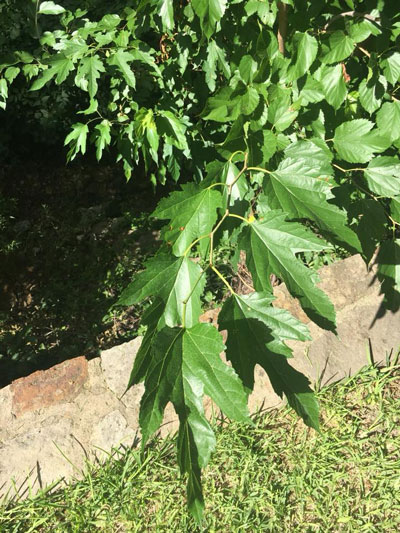Question of the Week – Number 2: July 29, 2021

“Is this a tree that’s worth saving? It came up volunteer in my bed and I don’t even know what it is.”
Some trees produce seedlings that don’t resemble the mature mother trees at all. Just like Collies don’t look much like their mamas, while giraffes certainly do.
This is juvenile (seedling) foliage of a fruiting mulberry tree. It was undoubtedly planted by some free-flying bird that visited the mother mulberry, then happened past this spot in the reader’s landscape (or a place directly above it).
I’m asked to identify these “maple-like” seedlings many times each year. So many so, in fact, that I can almost finish the question before the reader or radio listener finishes asking it.
If you look in the background in the photo you can see the mature adult foliage that is typical of mulberries. That’s what these branches will ultimately produce.

Then, as the tree matures, the branches will bloom in early spring, and by May they will begin loading themselves with fruit. Thousands and thousands of black fruit that will attract hundreds of birds and thousands of houseflies right to your landscape. And stain your driveway and patio. You’ll be buying a multi-trip pass to the carwash.
Soon the birds will repeat the process, and you and your neighbors will be the proud parents of hundreds of seedling mulberries, and so the legacy will be carried on.
And finally, to answer your question, were I in your garden boots, no, I would not save mulberry seedlings. While they make nice shade trees, it’s a rare gardener who speaks up on their behalf. They’re just too messy and way too invasive. There are much better trees out there for just a few dollars spent at the nursery.
